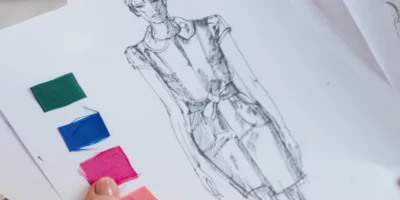Just-in-time inventory management (JIT), also known as lean manufacturing and sometimes referred to as Toyota’s production system (TPS), is an inventory strategy that companies use to increase efficiency. The process involves ordering and maintaining inventory for the production and sale of customers only when this is necessary for the production of goods, and not before. Our guide and background shows you how to use Just-in-Time Inventory Management (JIT).
This type of inventory management offers many advantages, but is not without drawbacks and strongly depends on factors such as a strong, fast and efficient supplier network.
The purpose of Just-in-Time Inventory Management (JIT)
The demand-based ordering of inventories means that the company has no safety stock and operates with constantly low inventories. This strategy helps companies reduce their storage costs, increase efficiency and reduce waste. JIT requires manufacturers to provide a very accurate forecast of the demand for their products.
Just-in-time inventory management is a positive strategy for cost savings in inventory management, but can also lead to stockouts. The goal of JIT is to improve a company’s return on investment by reducing non-essential costs.
There are some competing inventory management systems, including Short Circulation (SCM), Continuous Flow Manufacturing (CFM), and Demand Flow Manufacturing (DFM).
The JIT inventory management system is a departure from the older “just-in-case” strategy, in which manufacturers stocked stocks and raw materials much larger if they had to produce more units due to higher demand.
History of Just-in-Time Inventory Management (JIT) technology
The management technology comes from Japan and is often attributed to Toyota. However, many believe that Japan’s shipyards were the first to develop and successfully implement this approach. Its origins are seen as threefold: Japan’s lack of money in the postwar period, lack of space for large factories and inventory, and the lack of natural resources in Japan. Thus the Japanese “rejected” their trials, and JIT was born.
News of the process and success of JIT/TPS reached western shores in 1977 and was introduced in the United States and other developed countries in 1980.
Benefits of the system
JIT offers benefits by allowing manufacturers to keep production short and quickly and easily switch to new products when needed. Companies using JIT no longer have to stock up on a huge storage space. A company no longer has to spend a lot of money on raw materials for production, because it only orders exactly what it needs, which releases the cash flow for other purposes.
Toyota’s strategy
Toyota began reviewing JIT’s inventory in the 1970s and took more than 15 years to perfect the process. Toyota only sends out orders to buy production parts when new orders are received from customers.
The production of Toyota and JIT will be successful as long as the company maintains a consistent production rate with high-quality processing and no machine failures in the factory that could bring production to a standstill. In addition, reliable suppliers are needed, who can always deliver parts quickly, and the ability to efficiently assemble machines that assemble their vehicles.
Possible risks
JIT stocks can cause supply chain disruptions. Only a single supplier of raw materials, who has a breakdown and cannot deliver the goods on time, stops the entire production process of a manufacturer. A customer order for goods that exceeds the company’s projected expectations can lead to a shortage of parts that delays the delivery of finished products to all customers.
An example of a fault in Just-in-Time Inventory Management (JIT)
In 1997, a fire at a brake factory in Aisin destroyed the production of a P-valve part for Toyotavehicles. Aisin was the only supplier of this part to Toyota, and the company had to stop production for several weeks. Due to Toyota’s JIT stock, the P-valve parts were empty after just one day.
A fire at the company, which was the only supplier of the part to Toyota, and the fact that the plant had been shut down for weeks, may have destroyed Toyota’s supply line. Fortunately, a supplier of Aisin was able to convert the necessary P-valves and start production after just two days.
Still, the fire cost Toyota nearly 15 billion dollars in revenue and 70,000 cars. The problem also occurred with other suppliers for Toyota. Some suppliers had to stop operations because the car manufacturer did not need parts to complete vehicles at the assembly stand.




